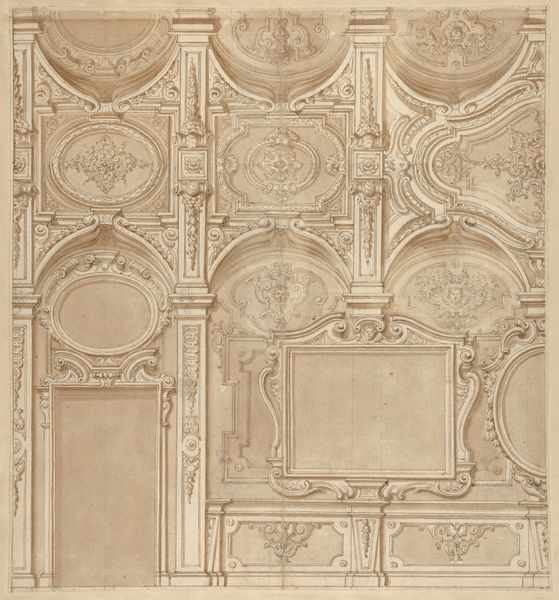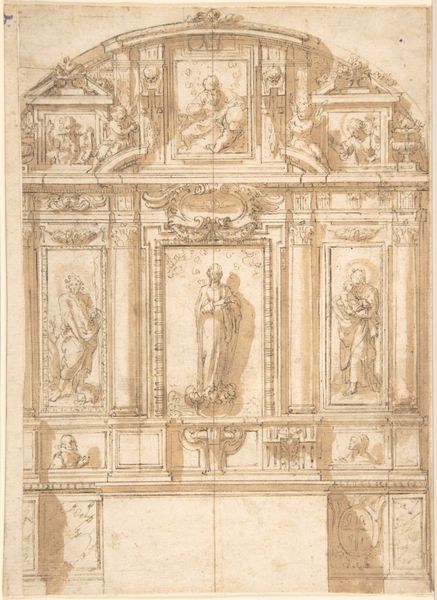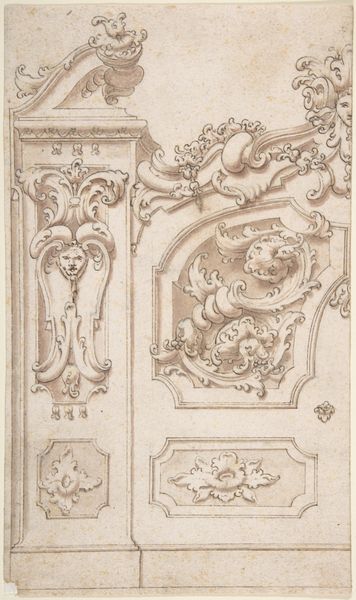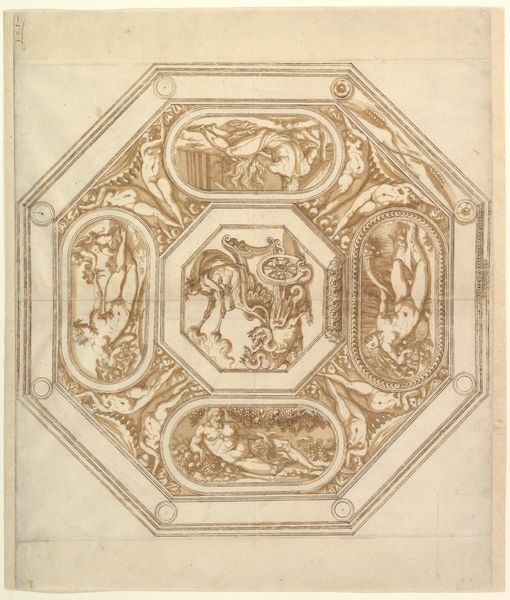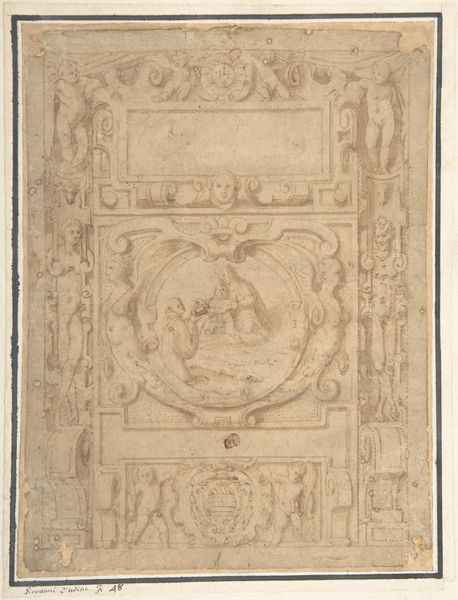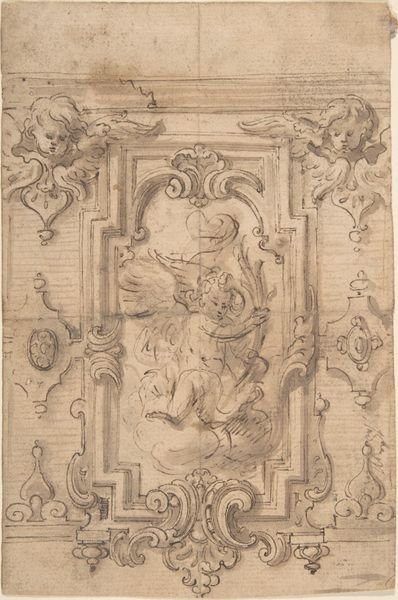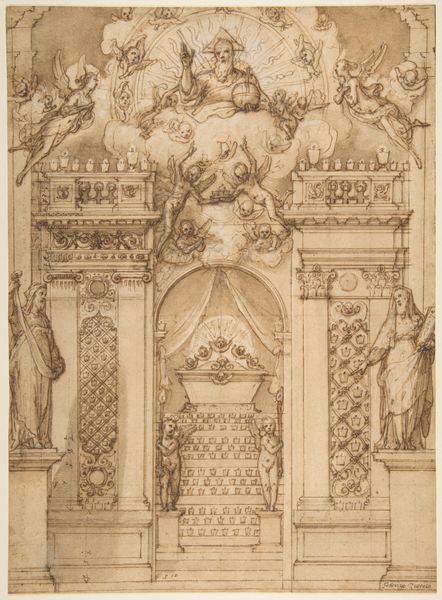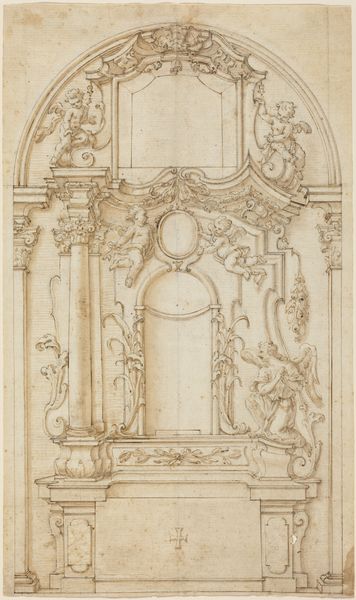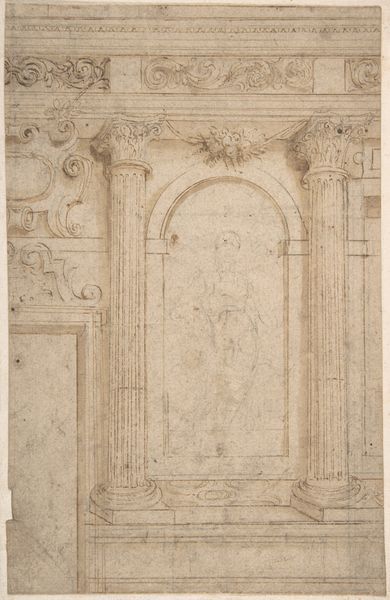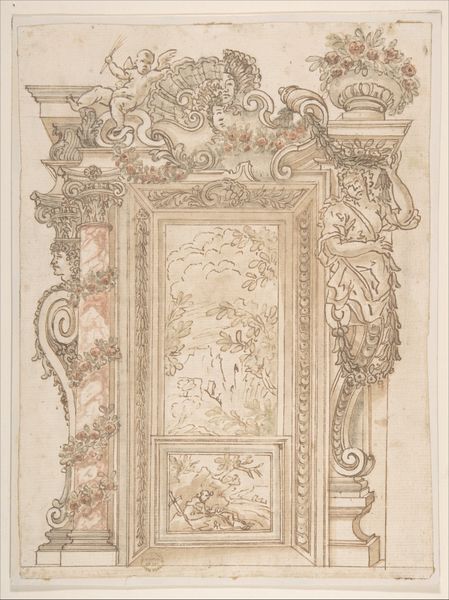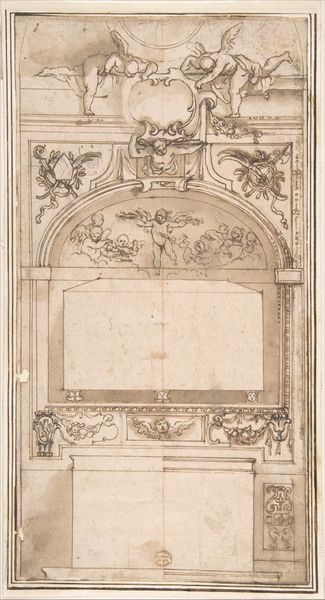
Study for a Ceiling Decoration, with Rebecca and Eliezer at the Well (recto); Study for a Ceiling Decoration (verso) 1569 - 1573
0:00
0:00
drawing, print, paper, ink, chalk, graphite
#
drawing
# print
#
figuration
#
paper
#
11_renaissance
#
traditional architecture
#
nude colour palette
#
ink
#
chalk
#
graphite
#
history-painting
#
italian-renaissance
#
nude
Dimensions: 363 × 237 mm
Copyright: Public Domain
Editor: This drawing, "Study for a Ceiling Decoration, with Rebecca and Eliezer at the Well" by Giorgio Vasari, dating back to 1569-1573, employs ink, graphite, and chalk on paper. The intricate divisions and figural groupings suggest a highly decorative scheme, a world of elite, elevated patronage. How do you interpret its function in the social and political context of Renaissance Italy? Curator: Well, given Vasari's role as a court artist and his involvement in projects celebrating Medici power, it's very likely this ceiling design, while ostensibly depicting biblical scenes and allegorical figures, was also intended to project the patron’s virtues and lineage. Consider the careful placement of these figures, arranged in an almost hierarchical order within those heavily framed compartments. Do you see how it resembles a family tree or a display of noble emblems? Editor: Yes, now that you mention it, the framing almost resembles individual picture frames of a family gallery, carefully constructed and put on display for all to admire. But it is, also, simply about decoration, right? Curator: Not entirely. Remember the Renaissance was obsessed with the idea of ‘decorum’ - appropriate imagery for specific audiences. A wealthy family might commission something like this for their palazzo, shaping public perception of their power. A patron like Cosimo de' Medici knew full well how art could legitimize his reign and influence. The placement of a scene of 'Rebecca and Eliezer at the Well' right at the center, signals not only religious virtue, but perhaps something else. Editor: Something else, like what? Curator: Water. Fertility. Sustaining a population through trade and agriculture. Even veiled commentary could amplify the ruler’s position. Art never existed in a bubble back then, particularly not for folks like Vasari. Editor: That makes sense. I guess what I'm learning is there's a lot more going on "under the surface" in many artworks, tied to who was commissioning the work and the social and political role that artwork was intended to serve. Thanks, that's fascinating!
Comments
No comments
Be the first to comment and join the conversation on the ultimate creative platform.
